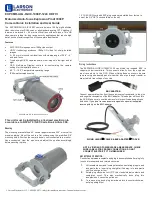
221
f
: Aperture-Priority AE
The aperture opening (diaphragm) changes only at the moment when
the picture is taken. Otherwise, the aperture remains fully open.
Therefore, when you look at the scene through the viewfinder or on the
LCD monitor, the depth of field will look narrow.
Press the depth-of-field preview button
to stop down the lens to the current
aperture setting and check the depth of
field (range of acceptable focus).
Depth-of-Field Preview
N
If the “
30"
” shutter speed blinks, it indicates
underexposure.
Turn the <
6
> dial to set a larger aperture (lower
f/number) until the shutter speed blinking stops or
set a higher ISO speed.
If the “
8000
” shutter speed blinks, it indicates
overexposure.
Turn the <
6
> dial to set a smaller aperture
(higher aperture f/number) until the shutter speed
blinking stops or set a lower ISO speed.
Aperture Display
The higher the f/number, the smaller the aperture opening will be. The
f/number displayed will differ depending on the lens. If no lens is attached to
the camera, “
00
” will be displayed for the aperture.
A higher f/number will make more of the foreground and background fall
within acceptable focus. However, the viewfinder will look darker.
While looking at the Live View image (p.286), you can change the
aperture and press the depth-of-field preview button to see how the
depth of field changes.
The exposure will be locked (AE lock) while the depth-of-field preview
button is pressed.
Summary of Contents for EOS 7D Mark II (G)
Page 1: ...EOS 7D Mark II G INSTRUCTION MANUAL ENGLISH ...
Page 36: ...36 ...
Page 144: ...144 ...
Page 214: ...214 ...
Page 284: ...284 ...
Page 312: ...312 ...
Page 396: ...396 ...
Page 530: ...530 ...
Page 541: ...541 ...
Page 549: ...549 ...
















































